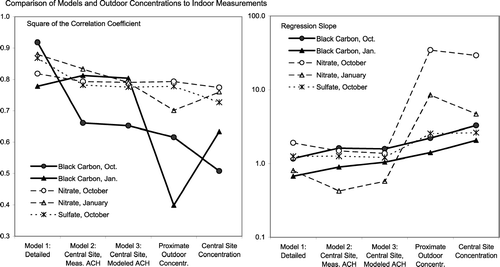Figures & data
TABLE 1 Model for inputs to mass balance analysis
FIG. 1 Indoor, outdoor, and central site concentrations of black carbon, sulfate, and nitrate, together with the air exchange rate inside the Clovis Study House, during a period when the ventilation rates were purposely manipulated.

FIG. 2 Indoor, outdoor, and central site concentrations of black carbon and nitrate during the period between the Christmas and New Years holidays when the house was unoccupied with doors and windows closed.
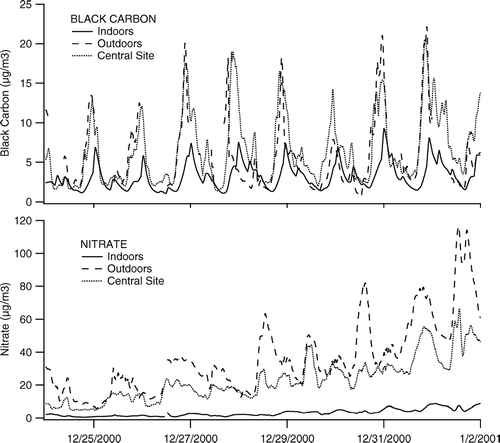
TABLE 2 Comparison of filter and continuous measurementsFootnote 1
FIG. 3 Comparison air exchange rates estimated using the LBNL infiltration model to that measured by SF6 tracer gas methods, showing the variation with the indoor-outdoor temperature difference. (Occasional spikes in measurements coincide with opening of doors to service instruments.)
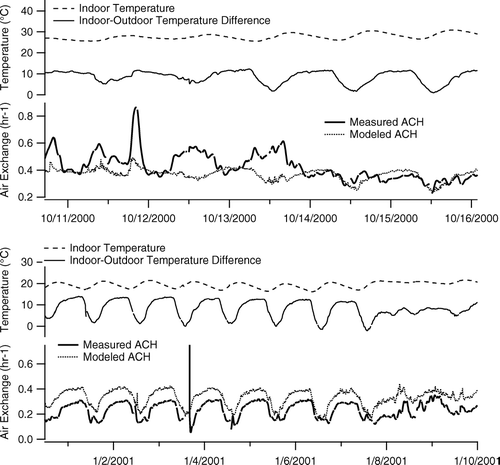
FIG. 4 Modeled indoor concentrations of black carbon, sulfate, and nitrate calculated using the three approaches outlined in , with comparison to measured values. Results are for one week of measurements during the fall study period when doors and windows in the house were closed. For nitrate, results are also given for Model 1 when the evaporation term is set to zero.

FIG. 5 Modeled indoor concentrations of black carbon, sulfate, and nitrate obtained from the three approaches outlined in , with comparison to measured values, during wintertime closed-house measurements. For nitrate, results are also given for Model 1 when the evaporation term is set to zero.
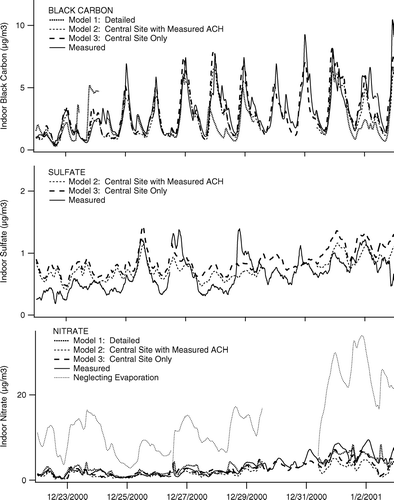
TABLE 3 Comparison of measured and modeled concentrations from differing model inputs1
FIG. 6 Histograms of the difference between modeled and measured indoor concentrations of black carbon, sulfate, and nitrate for the three modeling approaches outlined in . Model (1) uses measured air exchange rates, nitrate evaporation calculated from measured indoor temperatures and ambient concentrations measured immediately outside the house; model (2) uses outdoor concentrations from the central monitoring site and measured air exchange rages and (3) using central site data only, with air exchange rates estimated from the LBNL infiltration model. Penetration = 0.75, deposition = 0.2 hr− 1 for all scenarios. Data are from fall and winter study periods when windows and doors to the house were closed (October 10 midnight–October 16 noon, December 22 midnight–December 29 noon, December 31 noon–January 15 midnight).
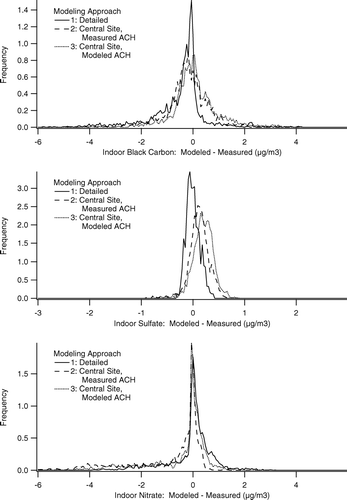
FIG. 7 Comparison of regression coefficient squared (R2) and regression slope for linear fits of each of the three model calculations, the proximate outdoor concentration and the central site concentration to the hourly averaged indoor concentrations for black carbon, nitrate, and sulfate. Data are shown for black carbon, nitrate, and sulfate during a one-week period in October, and for black carbon and nitrate for a two-week period in January, when the house was unoccupied with windows and doors shut.
